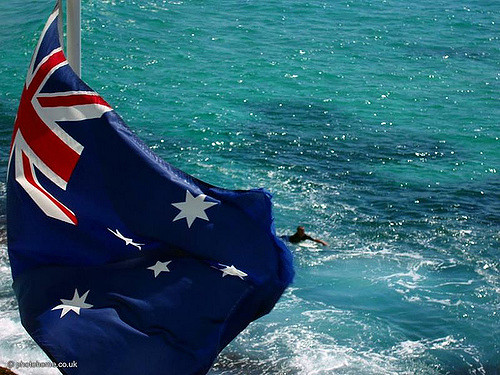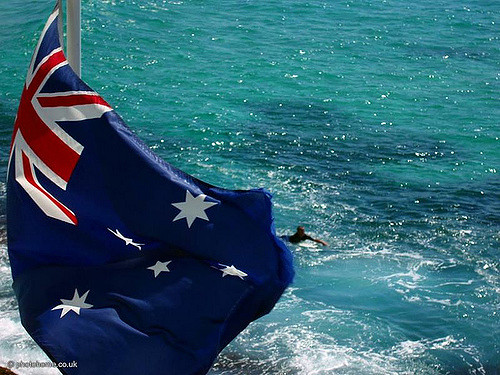
photohome_uk
Australia has become the sixth country to ratify the Comprehensive and Progressive Agreement for Trans-Pacific Partnership (CPTPP). Now, the trade agreement, which was originally intended to become a barrier to the trade expansion of China, includes 11 Pacific states. Despite Washington’s withdrawal and the gloomy forecasts of specialists, the CPTPP survived and, according to Japanese Economy Minister Toshimitsu Motegi, will enter into force on December 30 of this year.
After Donald Trump's decision to withdraw America from the Pacific Partnership, Japan became its informal leader. According to the terms of the agreement, its entry into force requires ratification of at least six signatories. Canberra's ratification of the CPTPP on the last day of October allows the 60-day activation of the agreement to be launched, i.e. its entry into force.
“I hope that the other signatories will follow the example of Australia after the CPTPP enters into force,” said David Parker, Minister of Trade and Export Expansion of New Zealand. New Zealand, recall, is the depository of the Trans-Pacific Partnership Agreement. - Many of them are now vigorously working on the necessary changes to domestic laws and tariffs. We expect that other participants will ratify it in the coming weeks and months.”
CPTPP, even without the United States, covers countries with a population in excess of half a billion people. Their share in the GDP of the planet is 14% (13.5 trillion dollars). The sharp intensification of efforts to bring the agreement into force is caused by the trade war between the United States and China. The war of tariffs between the two largest economies on the planet in one way or another affects all other countries, primarily those located in the Pacific region.
Ratification of the agreement was welcomed by the other ten participants of the CPTPP. It's all about timing. Canberra, following Canada, which ratified the agreement last week, managed to do so before November 1. This will make the Trans-Pacific Partnership operating at the end of the year, and already on January 1, 2019, the second cycle of tariff reductions will begin.
Australia joined Canada, Mexico, Japan, Singapore and New Zealand. The agreement has yet to be ratified by Brunei, Chile, Malaysia, Peru and Vietnam. Naturally, other states can also enter the CPTPP.
The initial agreement on a free trade zone in the Asia-Pacific region was signed in February 2016 under President Obama. Then it included 12 countries and it was called TRR. However, in January 2017, the President of the United States, Donald Trump, within a few days after moving to the White House, signed a decree on the US withdrawal from the agreement.
Trump's decision resulted in America losing $ 131 billion in revenue, which it could receive from this agreement until 2030. The White House has deprived the rest of the planet almost half a trillion of revenues.
The agreement survived thanks to Tokyo, which has put a lot of effort to preserve it. The remaining 11 countries decided to establish the CPTPP. The agreement on its creation was signed on March 8, 2018 in Chile.
“This agreement perfectly illustrates how 11 states can unite against protectionism through trade liberalization and tightening the rules under which it is conducted,” said Jim Carr, Canada’s Trade Diversification Minister after Ottawa ratified it. “International trade matters: it’s about improving people's lives by creating more opportunities for prosperity through hard work.”
source: reuters.com, cbc.ca
After Donald Trump's decision to withdraw America from the Pacific Partnership, Japan became its informal leader. According to the terms of the agreement, its entry into force requires ratification of at least six signatories. Canberra's ratification of the CPTPP on the last day of October allows the 60-day activation of the agreement to be launched, i.e. its entry into force.
“I hope that the other signatories will follow the example of Australia after the CPTPP enters into force,” said David Parker, Minister of Trade and Export Expansion of New Zealand. New Zealand, recall, is the depository of the Trans-Pacific Partnership Agreement. - Many of them are now vigorously working on the necessary changes to domestic laws and tariffs. We expect that other participants will ratify it in the coming weeks and months.”
CPTPP, even without the United States, covers countries with a population in excess of half a billion people. Their share in the GDP of the planet is 14% (13.5 trillion dollars). The sharp intensification of efforts to bring the agreement into force is caused by the trade war between the United States and China. The war of tariffs between the two largest economies on the planet in one way or another affects all other countries, primarily those located in the Pacific region.
Ratification of the agreement was welcomed by the other ten participants of the CPTPP. It's all about timing. Canberra, following Canada, which ratified the agreement last week, managed to do so before November 1. This will make the Trans-Pacific Partnership operating at the end of the year, and already on January 1, 2019, the second cycle of tariff reductions will begin.
Australia joined Canada, Mexico, Japan, Singapore and New Zealand. The agreement has yet to be ratified by Brunei, Chile, Malaysia, Peru and Vietnam. Naturally, other states can also enter the CPTPP.
The initial agreement on a free trade zone in the Asia-Pacific region was signed in February 2016 under President Obama. Then it included 12 countries and it was called TRR. However, in January 2017, the President of the United States, Donald Trump, within a few days after moving to the White House, signed a decree on the US withdrawal from the agreement.
Trump's decision resulted in America losing $ 131 billion in revenue, which it could receive from this agreement until 2030. The White House has deprived the rest of the planet almost half a trillion of revenues.
The agreement survived thanks to Tokyo, which has put a lot of effort to preserve it. The remaining 11 countries decided to establish the CPTPP. The agreement on its creation was signed on March 8, 2018 in Chile.
“This agreement perfectly illustrates how 11 states can unite against protectionism through trade liberalization and tightening the rules under which it is conducted,” said Jim Carr, Canada’s Trade Diversification Minister after Ottawa ratified it. “International trade matters: it’s about improving people's lives by creating more opportunities for prosperity through hard work.”
source: reuters.com, cbc.ca





